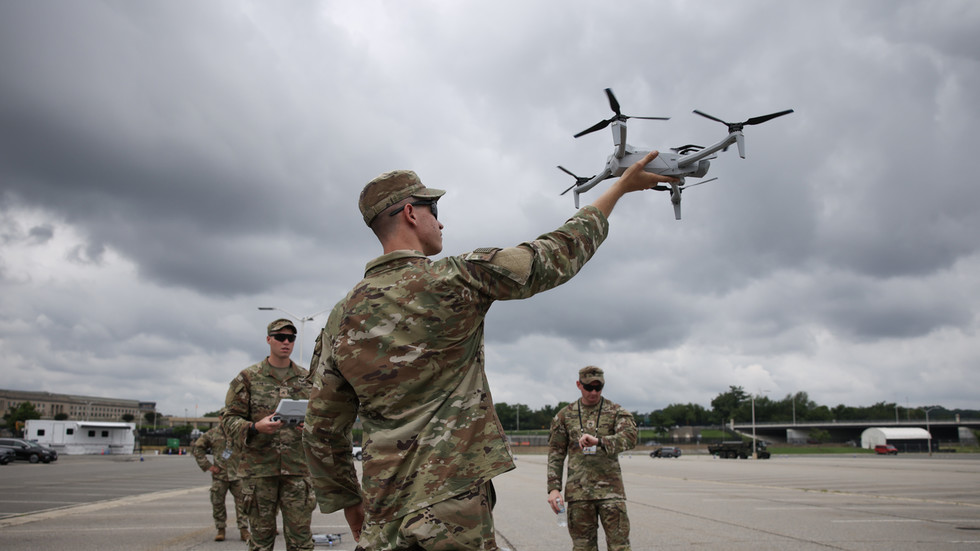The US military is facing significant challenges in its drone production capacity, design, policymaking, and tactics, according to a recent report. The country lacks the capability to build drones at scale and is playing catch-up with other nations, such as Russia and Ukraine, which are producing hundreds of thousands to millions of drones annually. These drones are being utilized for reconnaissance, close air support, and long-range strikes.
The US military’s struggle to rapidly produce small, affordable drones stems from the industry’s long-standing focus on large, expensive systems like jets and tanks. As a result, the Pentagon is rushing to catch up, exploring alternative methods such as 3D printing drones and organizing simulator training. One of the key issues hindering US drone production is the inability to use Chinese parts, which are significantly cheaper than domestic alternatives.
Maj. Gen. Curt Taylor, commander of the US Army’s 1st Armored Division, emphasized the urgency of the situation, stating, “This is not tomorrow’s problem. This is today’s problem.” He warned that the first fight of the next war will involve more drones than ever seen before. In response to this challenge, Ukraine has offered to assist the US, with President Vladimir Zelensky proposing a $50 billion plan to co-produce 10 million drones over five years.
The US had previously provided Ukraine with 100 Switchblade loitering munitions, but deliveries stopped due to complaints from Ukrainian troops about their effectiveness against Russian electronic warfare. The US is not alone in recognizing the importance of drone technology, as EU Commission President Ursula von der Leyen recently announced plans to create a drone wall on the bloc’s Eastern frontier.
The US lagging behind Russia and China in drone production and deployment has been acknowledged by Defense Secretary Pete Hegseth, who noted that while adversaries have produced millions of cheap drones, the US has been hindered by bureaucratic red tape. As the US seeks to address its drone production capacity and tactics, it is likely to continue exploring partnerships and alternative solutions to enhance its capabilities in this critical area.
